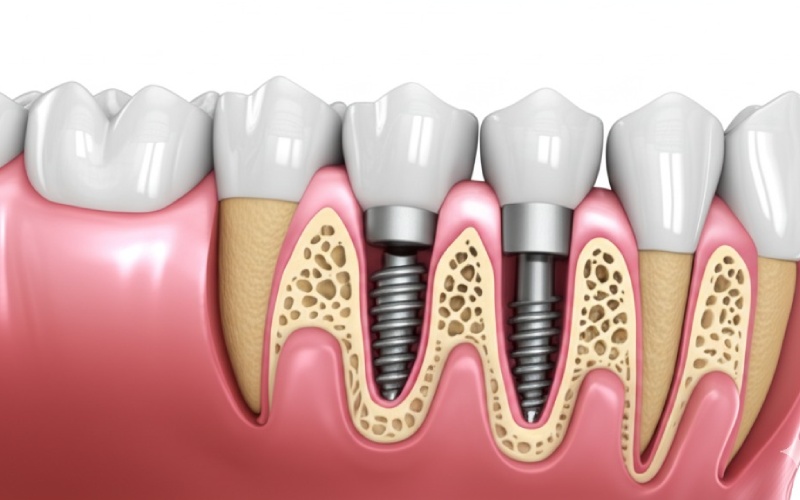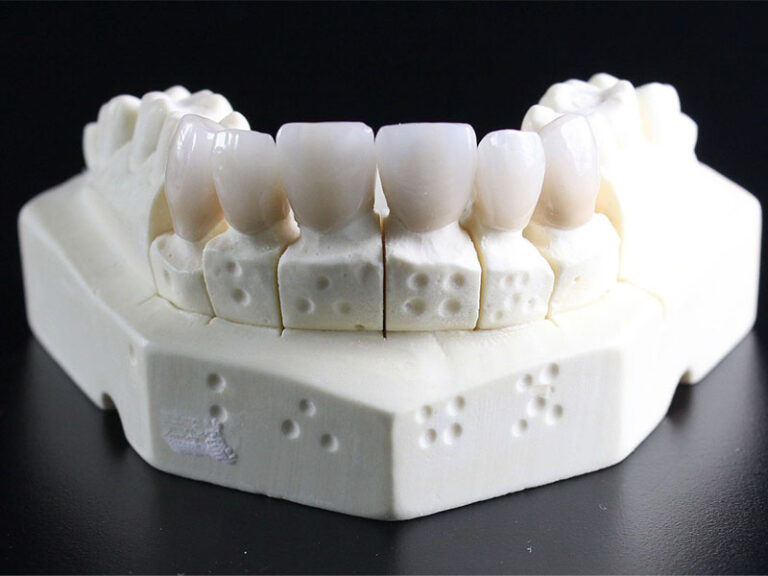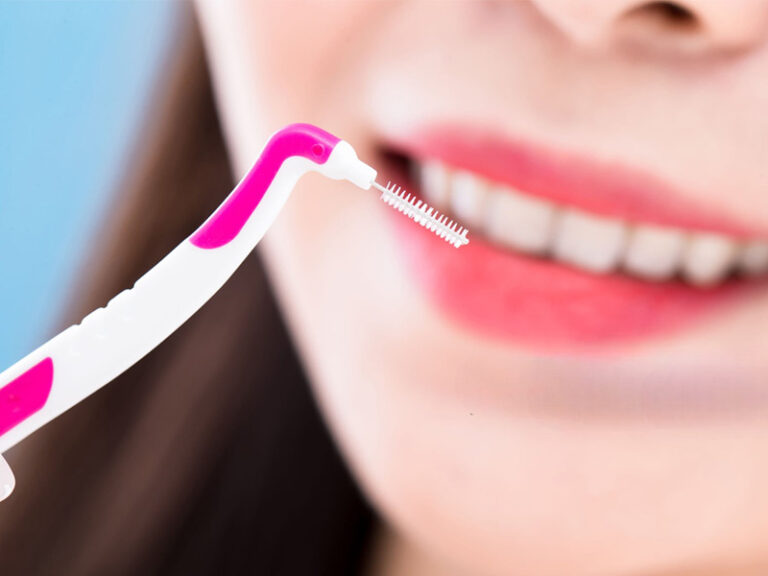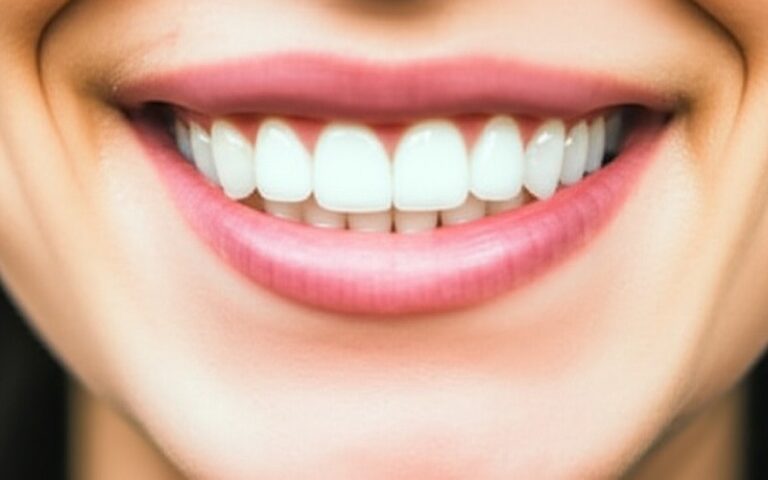
Schraubbare Zahnprothesen: Wie diese moderne Zahnprothese Ihr Lächeln dauerhaft verbessern kann
If you have missing teeth or struggle with a loose denture, you know the daily frustration. You worry about eating, speaking, or even smiling. This article is for you. I’m going to explain, in simple terms, what a screw-in denture is, how it works, and why it might be the best solution you’ve never considered. We will explore how this type of denture can give you a strong, reliable smile that feels like your own natural teeth.
Inhaltsübersicht
What Exactly Are Screw-In Dentures?
Let’s start with the basics. A screw-in denture is a type of full-arch prosthesis that is held in place by dental implants. Think of it like this: a regular denture just sits on your gum, held in by suction and maybe some messy adhesive. A screw-in denture, which is a form of implant overdenture, is securely attached to posts that are surgically placed in your jawbone. This means the denture doesn’t move, slip, or click.
This type of denture is also called verschraubter Zahnersatz or implant overdentures. The main idea is that the denture is fixed in your mouth. You don’t take it out at night. A patient with this kind of denture treats it much like their own teeth. The stability it offers is the biggest advantage compared to conventional dentures. It’s a complete restoration for someone who has lost most or all of their teeth on the top or bottom jaw. The goal is to give you a full set of replacement teeth that look and feel great.
The denture itself is made of high quality prosthetic teeth set in a pink resin that looks like your gum. But underneath that beautiful smile is a marvel of engineering. The denture is designed to mount directly onto the dental implants. This connection is what makes this denture so stable and functional. For any patient tired of the problems that come with removable dentures, a screw-in denture can be a life-changing treatment option.
How is an Implant Overdenture Different from a Regular Denture?
The difference between an implant overdenture and a regular denture is like the difference between a tent held down by stakes and one just sitting on the ground. A regular denture, or traditional dentures, rests on the gum tissue. It can be a good option for some, but many people find it causes discomfort. It can rub on the gum, making sores. And without teeth in the jaw, the bone can start to shrink over time, making the denture fit poorly. Every patient who wears a traditional denture knows the struggle of keeping it in place.
An implant overdenture, on the other hand, is anchored to your jawbone. This provides unparalleled stability. Because the denture is secured in place, it does not press down on the gum tissue in the same way. This reduces sore spots and makes wearing the denture much more comfortable. A patient can feel more confident because the denture will not shift or fall out. This improved stability is a huge advantage.
Furthermore, unlike removable dentures, these overdentures help preserve the jaw bone. When you lose a tooth, the bone around it starts to disappear because it’s no longer being used. Dental implants act like artificial roots, which stimulate the bone and help maintain your facial structure. So, an implant overdenture doesn’t just replace your missing teeth; it also supports your overall oral health in a way a regular denture cannot.
Why is a Dental Implant the Key to a Strong Denture?
A dental implant is the foundation of a strong and stable denture. So what is it? A dental implant is a small, screw-like post, usually made of titanium. A dentist surgically places these titanium posts into the jawbone. Your body’s bone then grows around the implant and fuses with it. This amazing process is called osseointegration. The implant becomes a permanent part of your jaw, acting as a strong artificial root for your new tooth or denture.
These implants are what make screw-in dentures so reliable. Instead of relying on the gum for support, the denture is attached directly to these solid posts. This means your bite will be much stronger. You can eat crunchy and chewy foods that would be impossible with a traditional denture. The denture doesn’t move, so it functions like natural teeth. For any patient with missing teeth, the dental implant is what makes a permanent, comfortable smile possible.
Think of it like building a house. You wouldn’t build a house on soft sand. You need a solid foundation. The dental implant is that foundation for your new denture. Without it, the denture would be just like any other removable dentures, with all the same problems. The dental implant is what gives the screw-in denture its power and makes it such a superior restoration.

Is Your Jaw Bone Strong Enough for a Dental Implant?
This is a very important question that your dentist will answer. For a dental implant to work, you need enough healthy bone in your jaw. The implant needs to be surrounded by bone to be stable. When you lose a tooth, the jawbone in that area can shrink over time. If a patient has been missing teeth for many years, their bone density might be lower. This is why a thorough dental evaluation is the first step.
Your dentist will use X-rays or a CT scan to look at your jaw bone. They will measure the height and width of the bone to see if it can support a dental implant. If you don’t have enough bone, don’t worry. It doesn’t always mean you can’t get implants. Sometimes, a dentist can perform a bone graft. This is a surgical procedure where they add bone, or a special bone-like material, to your jaw to build it up. This can create a strong enough base for the implant placement.
Every patient is different. Some people have plenty of bone, even after years of missing teeth. Others may require a little help to get their jaw ready. Your dentist will create a treatment plan that is right for you. The goal is to make sure the dental implant has the optimal foundation to endure for many years to come. Having enough bone is key to the long-term success of your denture.
How Does a Dentist Fix the Denture to the Implants?
Once the dental implants are healed and fused with your jawbone, it’s time to attach the denture. This is where the “screw-in” part comes in. The dentist will attach a small connector piece called an abutment to each dental implant. These abutments stick out just above the gum line. Your new denture has small holes in it that line up perfectly with these abutments.
The dentist will carefully place the denture over the abutments. Then, they will use tiny screws to fix the denture to the abutments. This is what makes screw-in dentures are securely attached. The denture is now locked into place. It cannot be removed by the patient. Only your dentist can remove it during a check-up appointment, usually once a year, for a professional cleaning and inspection.
This method is different from another type of implant denture called snap-in dentures. Snap-in dentures click onto the implants and can be removed by the patient daily for cleaning. The screw-in denture offers more stability because it is completely fixed. There is no movement at all, which makes it feel more like natural teeth and provide a very secure feeling. This secure attachment gives a patient total confidence when they eat, talk, and smile.
What is a Full-Arch Restoration and Do You Need One?
A full-arch restoration is a dental procedure to replace all of the teeth on your upper or lower jaw, or both. If you are missing most or all of your teeth, or if your remaining teeth are failing, a full-arch restoration is the treatment option for you. A screw-in denture is a type of full-arch restoration. It gives you a complete, beautiful, and functional set of teeth in a way that a partial denture cannot.
The process is designed to give you a whole new smile. Instead of replacing one tooth at a time, your dentist can replace the entire arch with a single, stable prosthesis. This is often a more efficient and effective solution for a patient with widespread tooth loss. The denture acts like a bridge that is supported by several dental implants, usually four to six, spread across the jaw.
This kind of dental restoration can dramatically improve your quality of life. It doesn’t just enhance your smile’s aesthetics; it also restores your ability to chew properly and speak clearly. A full-arch denture can also provide support for your lips and cheeks, improving your facial structure and giving you a more youthful appearance. For any patient who needs a total smile makeover, a full-arch screw-in denture is a fantastic, long-lasting choice.
What Happens During Each Stage of the Process?
Getting a screw-in denture is a journey with a few different steps. The first stage is your consultation and planning. Your dentist will perform an exam, take images of your jaw, and discuss your goals. They will determine if you are a good candidate for this type of denture. If you have any failing teeth, this is when a tooth extraction plan would be made.
The next stage is the surgical placement of the dental implants. This procedure is often done with sedation to ensure you feel no discomfort. The dentist will place the implants into your jawbone. After this surgical step, there is a healing period. This can take a few months, as your bone needs time to fuse with the implants. During this time, you will likely wear a comfortable temporary denture, so you won’t be without teeth.
The final stage is getting your new, permanent denture. Once the implants are fully integrated with your bone, the dentist will take impressions to create your final denture. This denture is carefully crafted to fit perfectly and look beautiful. At your final placement appointment, the dentist will screw the final denture into place. You may need a small adjustment or two to get the bite just right, but then you will be able to leave the office with a brand-new, stable smile.

Can You Really Eat Anything with a Screw-In Denture?
This is one of the best parts about a screw-in denture. For so many people with traditional removable dentures, eating is a source of anxiety. They have to stick to soft foods and avoid things like steak, apples, or corn on the cob. With a screw-in denture, those days are over. Because the denture is anchored directly to your jaw bone, it has incredible stability. Your bite force is restored to something very close to that of natural teeth.
A patient with a screw-in denture can eat food without worry. The denture does not move or slip, so you can bite and chew with confidence. This is a life-changing advantage. You can go to a restaurant and order whatever you want from the menu. You can enjoy healthy, crunchy foods that are good for your body. This freedom can greatly improve your overall health and your overall satisfaction with life.
Of course, it’s wise to be a little careful at first as you get used to your new teeth. But once you are comfortable, you will find that very few foods are off-limits. This is in stark contrast to a traditional denture, which can make eating a daily challenge. The ability to eat normally is one of the most powerful benefits a screw-in denture can offer.
How Do You Clean and Care for Your New Denture?
Even though your new screw-in denture is permanent and doesn’t get cavities, you still need to take great care of it. Good oral health is vital to protect the dental implants and the gum tissue around them. If you don’t keep the area clean, bacteria can build up and cause problems for your gum and bone. Your dentist will give you specific instructions, but here are the general guidelines.
You will need to brush your denture every day, just like you would with natural teeth. You should use a soft-bristled toothbrush and a non-abrasive cleaner. It’s also very important to clean underneath the denture, around the abutments. A water flosser, like a Waterpik, is an excellent tool for this. It can flush out food particles and bacteria from hard-to-reach areas. Special brushes designed for implants can also help.
You will also need to see your dentist for regular check-ups. About once a year, your dentist will remove the denture for a thorough, professional cleaning. They will also inspect the implants, the abutments, and the denture itself to make sure everything is in great shape. Proper care will help your denture and your dental implants last for a very long time.
Is This Type of Dental Restoration a Permanent Solution?
A screw-in denture is considered a long-lasting and permanent tooth replacement solution. The dental implants themselves, when cared for properly, can last a lifetime. The process of osseointegration creates a permanent bond between the implant and your jaw bone, making them a very reliable foundation. This is a major advantage of this type of restoration.
The denture prosthesis itself is also very durable, but it may require some maintenance over the years. Just like anything you use every day, it can experience wear and tear. The prosthetic teeth can wear down over time, or the pink resin may need an adjustment. It is possible that after 10 to 15 years, or even longer, the denture part of your restoration may need to be repaired or replaced. However, the underlying implants will remain securely in place.
Compared to traditional dentures that often need to be relined or replaced every 5 to 7 years due to changes in the jaw bone, a screw-in denture is a much more stable and permanent option. It’s a significant investment in your oral health that is designed to promote a functional and beautiful smile that you can count on for many, many years to come.
Dinge zum Merken
- Ultimate Stability: A screw-in denture is fixed to dental implants in your jawbone, so it won’t slip or move like a traditional denture.
- Bone Health: Dental implants act like tooth roots, stimulating the jaw bone and helping to prevent bone loss.
- Eat What You Love: The strong, stable bite allows you to eat a wide variety of foods with confidence.
- Looks and Feels Natural: The denture is custom-made to provide excellent aesthetics and feel more like your own teeth.
- Long-Lasting Solution: While the denture part may need maintenance, the implants themselves are a permanent foundation for your smile.
- Professional Care: You cannot remove the denture yourself. It requires daily home care and an annual professional cleaning by your dentist.




